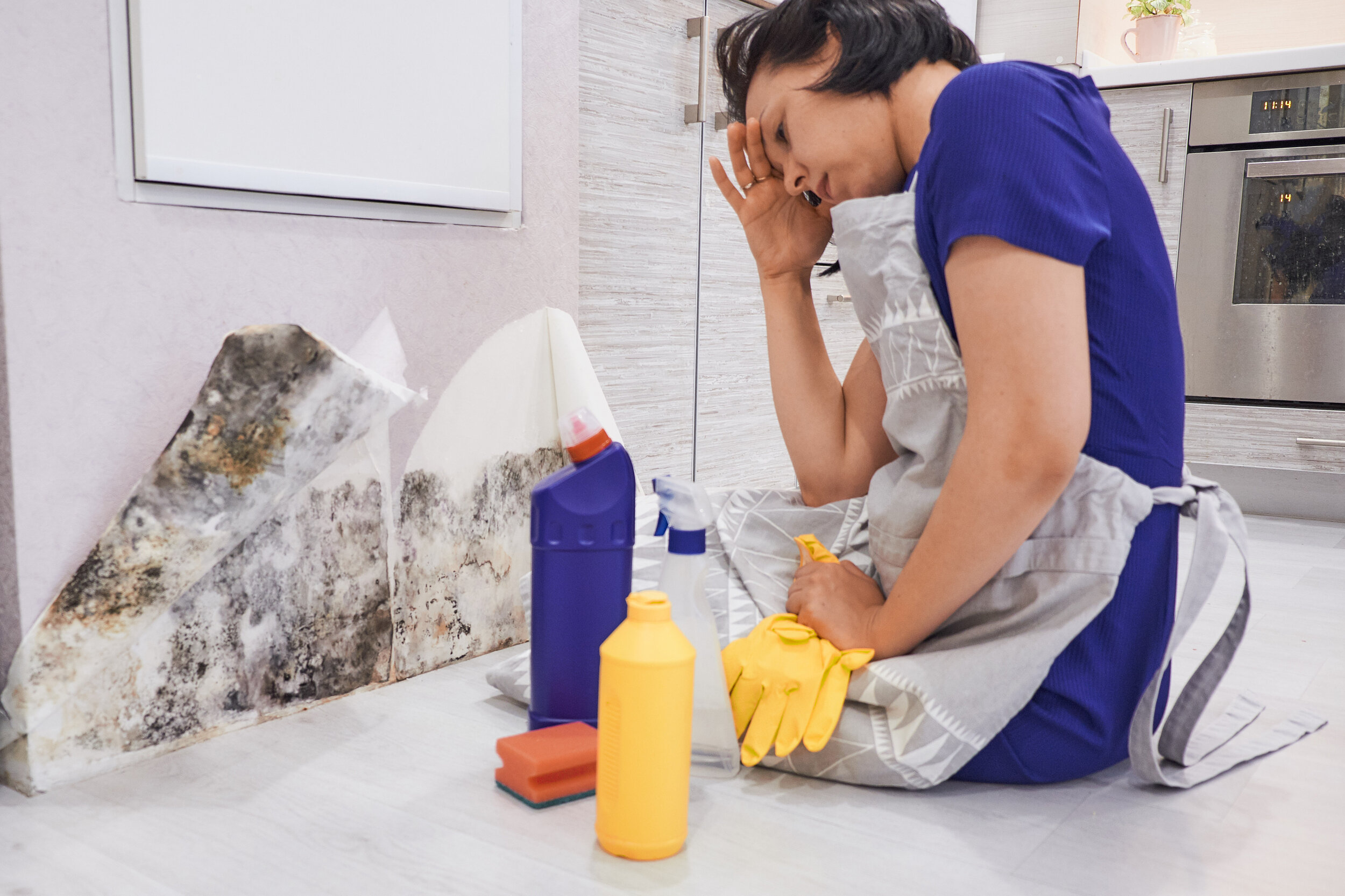Unseen Toxins: Mold in Your Home
Mold is a type of fungus that grows from spores in the air that land on a damp surface that is an ideal temperature. Unfortunately, mold can form just about anywhere in your home, especially during the most humid months. Here are some helpful tips for preventing, locating, and getting rid of mold in your home!
How and Where Mold Occurs
Mold grows from individual, invisible spores that are frequently found floating in both indoor and outdoor air. Although these spores are much more common than you might think, even indoor spores are typically harmless until they find a damp location that is ideal for growth. Mold grows best at a normal room temperature, and it can typically survive between 40-100 degrees Fahrenheit. This is why, for example, an unopened can of vegetables can last for years, but will quickly grow mold within a few days of being opened. Even though the vegetables are wet, they generally cannot grow mold until they have been exposed to spores in the air in your home, and the spores themselves cannot do any damage until they find a wet place to land.
Other types of mold that are not related to food can also form in damp areas of your home. Soaked areas that are a result of flooding, burst pipes, or other water damage are especially likely to lead to significant mold growth if they are not taken care of quickly, but even minor lasting dampness can cause mold. Basements, garages, and bathrooms are among the most common areas of your home for mold to grow in because they are frequently exposed to steam, rain water, or unnoticed leaks. This is especially common if these areas are not well ventilated and tend not to dry quickly. Any windows and vents throughout your home can also be ideal for mold growth.
Dangers of Mold
You may be surprised and a little concerned to learn that there are always mold spores in the air you breathe, but these spores are not dangerous in and of themselves. However, spores that grow into visible mold in damp areas can cause health problems and damage to your home or belongings if they are not taken care of within a reasonable amount of time.
Health Risks
Individual spores in the air are normal and do not typically cause health problems for most people. However, exposure to mold can cause sneezing, irritated eyes, throat, and lungs, and other symptoms. These irritations are especially common for people who are allergic to the mold or have asthma or other chronic respiratory problems. Most health issues associated with mold clear up once the mold is removed, but significant exposure over a prolonged period of time can lead to lingering problems.
Damage to Your Home and Belongings
Mold can also cause damage to any surfaces it is touching, such as your walls, window sills, and belongings. Small amounts of mold that are caught quickly can often be cleaned up before causing irreparable damage, but more significant amounts or any mold on certain surfaces, such as papers or carpeting, may not be able to be fixed.
Preventing Mold
Keeping your home as dry as possible is key when it comes to preventing mold from growing in the first place. Using a dehumidifier or air conditioner to keep the humidity in your home low (ideally between 30-50 percent) can make it much more difficult for mold spores to find a location that stays wet over time. Quickly cleaning up leaks or spills and fixing appliances that are not working properly also gets rid of large amounts of water before they have time to become problematic and lead to mold in your home.
How to Check for Mold
Visible mold is relatively easy to notice and deal with quickly, but not all mold grows in places that are easy to see. A moldy odor lets you know that there is mold somewhere nearby, but it can still be difficult to figure out exactly where it is. You may also suspect possible hidden mold in an area that recently had a significant spill, leak, or other unusual wetness or if you suddenly experience new and unexplained respiratory issues, even if you can't see or smell anything.
If you aren't sure if a substance is actually mold or just dirt, or if you find signs of mold you cannot see, confirmation is often best done by a professional. However, there are several tests you can do yourself and things to look for to help you identify possible mold. Moldy or musty smells and signs of water damage are among the most helpful clues to look for. Even if you cannot see the mold itself, these signs can lead you to its location.
Other tips for finding mold include gently tapping on walls with a screwdriver to search for soft, weak areas that mold may have rotted, searching for leaks even if there is no indication of damage, inspecting your ductwork, and using an at-home test kit to determine the level of spores in the air or to test for mold on surfaces.
Although any of these signs of mold should be investigated as soon as you notice them, mold that is behind furniture, inside walls, or in areas you rarely look closely at can still go undetected for quite some time. Adding checking for signs of mold to your deep spring cleaning routine can be a helpful way to remember to do so regularly enough to catch problems while they are easier to manage.
How to Get Rid of Mold in Your Home
Although you may be able to handle cleaning up small amounts of mold yourself, you're usually better off contacting a professional to effectively get rid of anything more than approximately 10 square feet of mold, if you are allergic to mold or have other health concerns about doing it yourself, or suspect that the mold may be linked to sewage or other contaminated water.
If you do choose to get rid of mold yourself, be sure to take precautions to avoid touching or breathing it. Ventilate the area as well as you can and wear gloves, goggles, and a respirator while using detergent and water to scrub hard surfaces. Surfaces or items that cannot be cleaned in this way may need to be thrown away unless they can be professionally cleaned.
In many circumstances, hiring a professional cleaning and restoration service can be safer and more convenient than doing it yourself. At OKSR Pro, we are IICRC certified in safely dealing with mold and making any needed repairs to restore your home or business and keep the mold from coming back. Our initial consultation gives us the opportunity to help Oklahoma City Metro Area residents determine what needs to be done, and we'll take it from there to thoroughly clean, make sure all the mold is gone, and restore as much of your property and belongings as we are reasonably able to so that you can get back to a fresh and safe environment as soon as possible. Contact us today with any questions you have about our mold remediation services or to schedule a consultation!


